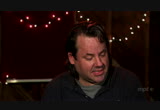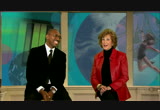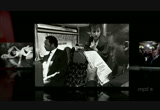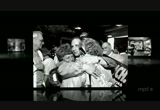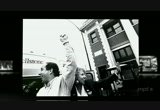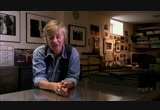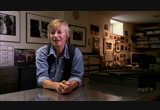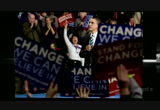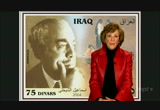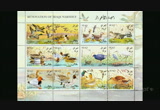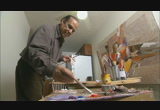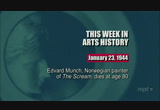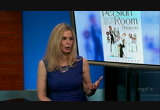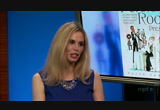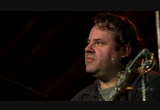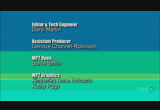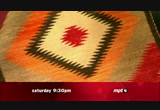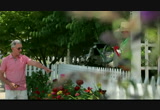tv CBS Morning News CBS February 1, 2013 4:30am-5:00am EST
4:30 am
>> host: in this edition of artworks ... a photographer who documents some of politics most iconic figures. >> the type of picture i'm looking for, sometimes i don't even know. >> host: an iraqi painter who left his country in search of the american ideal. >> here i, i freedom - i have freedom here. >> host: a look at one of the most famous little-known rooms in show business >> there was a lot going on. it was a crazy time. >> host: and a multitalented multitasking musician... >> the act of playing music is a meditation. >> host: it's all ahead on this edition of artworks . closed cap tioning provided by maryland public television
4:31 am
announcer: artworks is made possible in part by the mpt new initiatives fund founded by irene and edward h. kaplan. >> rhea: welcome to artworks mpt's new series about fascinating artists. some are established, even famous, and others are emerging into their own. and a few just defy definition. i'm rhea feikin, and i hope you're as excited as we are about this new arts venture that shares artists profiles across the country. we're proud that mpt plays a part. our co-host is kwame kwei-armah, artistic director for centerstage in baltimore. welcome, kwame. >> thank you, rhea. tonight, we explore the work of photographer terry gydesen. she's spent her career photographing some of the country's iconic political and cultural figures; from jesse jackson to prince.
4:32 am
her goal, capture a split second that endures through time, revealing personality and passion. >> terry: for me, there's a difference between a photograph and a picture. a photograph is a snap. a picture is something that really says something, that's going to stand the test of time, that people can look at a hundred years from now and learn something from it, or be intrigued by it, or poses more questions, perhaps. i'm terry gydesen, and i'm a freelance documentary photographer. the documentary part for me has always been the most interesting form of photography. i'm not as much of a director, i like to go into a situation of chaos and find the picture. and i don't set things up with any of my work. i've been pretty lucky at finding images that come together, and when it looks right, i push the button.
4:33 am
the political work, i've always, i've gone for not necessarily the candidate who's going to win, it's more of the passion. you know, sometimes the underdog, sometimes people that i'm, i completely have opposite views of. i was just starting my career when the opportunity came along to be jesse jackson's photographer. it was people's reactions to jackson which, to me, was the most amazing part. and there's just so much more than you can learn about a story by looking at the edges rather than just the central attention. i went right from jackson to wellstone because all the jackson people were working on paul wellstone's campaign. i'd never heard of paul wellstone.
4:34 am
a friend of mine had said that "oh yeah, you should follow him, you'll probably like him. you know, he doesn't have a chance of winning, but you'll probably like him." and i thought, you know, okay. and i did like him. and he was very unusual -- going in and hugging everybody. and he was this little guy and he had all this energy. so he was really interesting. when i heard the news of his death, i rushed right over to the office and documented that time period. and then shortly after that time, university of minnesota press asked me about doing a book, a collection of photographs. the book is definitely an archive of, for me, one of the greatest politicians minnesota's ever had. i had to go through 12 years of my life, looking for what might be the important images.
4:35 am
the photo of them that's on the cover of the book, i remember the moment very clearly because it was on election day of '96 and it was supposed to be his last time he was going to run. so it was like, oh, this is going to be the last hurrah, and i was back. there was this platform on the back of the bus and we were in uptown, we were having a great day, they were driving all through different places. there was another picture on the same roll that is from the inside of the bus that shows the two of them. i love that picture, and that was the one i always chose. and then it was going through the proof sheets when i was editing for the book that i discovered that one, and, you know, right away i just thought, ok, it's a great moment and it really captures their energy and spirit probably better than any other photograph i ever made of them. because i've been photographing politics for so many years the type of picture i'm looking for sometimes i don't even know, except that i am looking for metaphors that speak either about the candidate, the issues at hand.
4:36 am
i think it was at the republican convention that year actually, that year, '92, with george bush, and pat buchanan was giving his speech and slamming the media, slamming liberals gays and lesbians. and like i fell into all these categories and people were cheering as he condemned these people. and i'm in the middle of the floor going, oh my god this is, this is scary. so i think maybe one thing i'm trying to do is maybe wake people up a little bit to pay attention and to be involved. i'm most known for the political work, i think, probably because of the wellstone book. but basically i'm a storyteller, and i love telling stories. i've done projects on homeless mothers in transition, i did a project for the history center on minnesota snowbirds. you know, for a while i had a column in city pages called terry gydesen's daybook.
4:37 am
and it was a great little thing where every tuesday i brought a new photo in that was...you opened up page 3, it was right there. and it was no cutline, it was just, it had to be a good photo. and i still try to pretend that i have that, you know, just a daybook, you know, slice of life pictures. so, i mean, i try to do that a lot, of just what's around me, what's in my own backyard, you know, what's on my walk today. i'd gotten a phone call from another photographer who had told me that prince was looking for a photographer. and it's a long story on how the whole thing happened, but i ended up being hired to document his 1992 tour to europe. and it resulted in a book of photographs called "prince presents the sacrifice of victor." his title, not mine. the parts that were most fun was actually the after-concert
4:38 am
gigs, because he'd have the concert and he'd go and jam for two, three hours. and that's where i made, you know, some of my best pictures because then it was a different kind of a thing, there was more audience interplay, everything was closer, it was very intimate. you know, one of my favorites was after he had just jammed for, like, 45 minutes on one song at the end, and he went down behind stage and just laid back on the floor. and there's almost sort of this religious nature of him stretched out like christ on the floor, in a way. probably the best part of the experience was seeing what a genius he is, a musical genius. and to be able to have this record of that period of time recorded, again, ties into my whole feeling of, like, wanting to be a visual historian that leaves a record. and this is definitely one of minnesota's greatest artists and
4:39 am
it was a privilege for me to be able to watch him make his music and just observe that artistry. the idea of what's happened with digital and how it's changed photography as an art form and there's such a need for instantaneous photos, and people want them up on this website or on facebook, and all of that, instead of, you know, just taking the time to look, frankly, first, instead of just shoot, shoot, shoot, shoot shoot, shoot, shoot, look later. i still prefer an image that can really tell a story within that one image that will hold the attention and bring that
4:40 am
intrigue in, and bring the questions in, maybe in some cases bring the horror in to have people take action. >> rhea: to see more of terry gydesen's work, visit her website at terrygydesen.com. during the war in iraq, many museums were destroyed, and ancient artifacts and priceless works of arts were lost. baghdad artist farooq hassan fled iraq for the united states during this turbulent time. he left behind a life of comfort and international acclaim. he also lost a lifetime of paintings and his reputation as one of iraq's most prized
4:41 am
artists. you'll see how the artist has re-invented himself in portland, oregon. his life style has simplied, but once again, his work is hanging in exhibitions and gaining new recognition. >> reporter: it's a far cry from his five-bedroom mansion in baghdad. farooq hassan turns an already tiny apartment kitchen into his art studio. >> farooq: when i work i like to hear music, classic always classic. >> reporter: but as long as he has canvas and paint, farooq is satisfied. >> farooq: i feel inside me, inside my soul, that this painting is the only one here. it's the only thing in here.
4:42 am
so actually, i don't feel that i'm in a small place. it's just me and the painting. >> reporter: without skipping a beat, farooq carries forward the art career he started more than 50 years ago. >> farooq: i tried to test many kind of style when i was young and i continue. >> reporter: over the past 50 years in iraq, farooq mastered so many styles so diverse you might think the work came from several different artists. his work hung in galleries in london, amman, jordan, and at home in basra and baghdad. the iraqi government contracted with farooq to design more than 80 different stamps. the people of iraq knew the art of farooq hassan. in 2010, farooq fled to the united states and left behind all of his work, and his fame.
4:43 am
it's like losing yourself. >> farooq: yeah, of course. but i try to renew myself. >> reporter: farooq took his paintings to the geezer gallery in multnomah where curators embraced his art immediately. >> curator: well, without a doubt, he was extremely experienced. his layout, his form his design, color. he was magnificent. he is into that master's quality. obviously a lifetime of artwork. >> reporter: the gallery is hanging farooq's solo exhibition. >> curator: he is flourishing. and what a thrill to be a part of that. today farooq's paintings strike a similar central theme. >> farooq: i want to create a beautiful painting. the first thing i choose the women.
4:44 am
the women is beautiful. of course. they're beautiful. i believe the women is the origin of the life. >> reporter: you'll find examples of veiled women in farooq's earlier work. today farooq has done away with the veil. >> farooq: this woman is the truth. the truth is open. but the untrue is covered. cover their mind, cover their brain. here indeed i feel complete freedom without any feeling of something who watch me what i do, and what i paint, or what i think.
4:45 am
here i have freedom, i have freedom here. >> reporter: once a national treasure of iraq, farooq hassan starts over as a complete unknown in a new country and begins the process of rebuilding his reputation. >> kwame: to see some of farooq's work, visit geezergallery.com/gallery. by the way, this unique gallery showcases senior artists and supports the creation of senior talent and art therapy. the online gallery features many of these artists works. check it out. >> rhea: the famous plaza hotel is one of only two hotels designated as national historic landmarks in new york city. the plaza's illustrious visitors included the vanderbilts and the
4:46 am
beatles. perhaps the most famous resident of the plaza is fictional -- the heroine of the children's book series, eloise. yet, there's one little known part of the famed plaza's history that author patty farmer just recently revealed in her book, "the persian room presents." >> reporter: you would think with a legacy property like the plaza hotel in new york city, each story surrounding the place would have already been told. when patty farmer moved into a renovated condo in the hotel she found that assumption to be way off the mark. >> patty farmer: i kept hearing about this persian room, this nightclub that used to be there many years ago and through research i found out it had been there for four decades, and i had never heard of it. a lot of people have never heard of it. and i wanted to know more about it, so i went to the management of the hotel and asked to look in their archives. and maria, they looked at me like i had green hair.
4:47 am
they said, "archives? we have no archives." the plaza hotel! and i thought that was shameful. i said, "you've been here 100 years, you have nothing? the beatles were here. marilyn monroe was here. they said, "we have an odd picture or two, but no archives." >> reporter: so a few phone calls later, a curiosi quest took on a whole new purpose. and the result? the persian room. >> patty: so i was lucky enough to be able to talk to some of the greats: marge champion, andy williams, jack jones, patty paige, laney kazan, and they put the heart into it. the way they had it set up was prior to the show, the maitre de would tell the entertainer who was in the audience because any given night, the celebrities weren't only on stage, it was always in the audience. kind of like vegas in the old days. after people did their shows they would go to the persian room and catch another show. so the maitre di told carol,
4:48 am
you know, all the people that were in the audience and had to be recognized. and he was a hungarian gentleman, and he said "oh, we're so lucky. we have someone here, but you can't mention him. he can't be mentioned. he can't be mentioned. mr. cary grant. so carol did her opening bit and then she got to the part and she said, "oh, ethel merman's here and this one's here, and that one's here. and she said she couldn't help herself. finally she said to the audience, she said we all know there's an elephant in the room and i'm not supposed to mention him, but i have to mention him. mr. cary grant, thank you so much for coming. and she said she saw him at this little table back there. he stood up, he folded his napkin, put it down. and she thought she blew it. she thought he was getting ready to leave out that door that he was right by. but then he walked to the front
4:49 am
and the audience went crazy, they stood and clapped. and he went up to what was the stage, although it was ground level, and she put on her best fanny brice voice and said "oh, you're gorgeous." and he dipped her over and kissed her and said, "right back at ya." >> reporter: a kiss worth sharing. the intimate setting of the persian room lasted until 1975. patty found that the stories live on quite vividly with those who graced the place with their talents. you have been able to garner and gather into your collection a lovely clutch of gals that talk about their experiences and are very frank and very forthright about how outrageous that period of time was. >> patty: absolutely. you had connie stevens, and michelle lee, and the wonderful lani kazan, dianne carroll, who carried over from the '50s, into the '60. in the '70s you had rosalyn
4:50 am
kind, and kay ballard, and, you know, the '60s were crazy times, and connie stevens met eddie fischer at the persian room, eloise was born in the persian room. so there was a lot going on. it was a crazy time. >> rhea: patty farmer's book "the persian room presents," is available in e-book or hardcover. >> kwame: our last artist today defies definition. baltimore-based nathan bell, a one man band, uses a bow fingers, pick and claw-hammer to create new and unexpected sounds from his banjo. bell also plays trumpet, bass, guitar, and drums, with a wide range of musicians in the us and abroad, channeling a dynamic range of musical influences. he's on a perpetual quest to create music that is universal and pure.
4:54 am
4:55 am
that wraps it up for this edition of artworks . we hope you're intrigued by the exploration of creative lives that we would have no access to otherwise. for more arts and culture, visit mpt.org/artworks and you'll find feature stories, upcoming arts events, and more. i'm rhea feikin. >> and i'm kwame kwei-armah. please tune in next week for more exciting stories. thank you so much for watching. >> announcer: artworks is made possible in part by the mpt new initiatives fund founded by irene and edward h. kaplan.
134 Views
IN COLLECTIONS
WJZ (CBS) Television Archive
Television Archive  Television Archive News Search Service
Television Archive News Search Service 
Uploaded by TV Archive on

 Live Music Archive
Live Music Archive Librivox Free Audio
Librivox Free Audio Metropolitan Museum
Metropolitan Museum Cleveland Museum of Art
Cleveland Museum of Art Internet Arcade
Internet Arcade Console Living Room
Console Living Room Books to Borrow
Books to Borrow Open Library
Open Library TV News
TV News Understanding 9/11
Understanding 9/11
